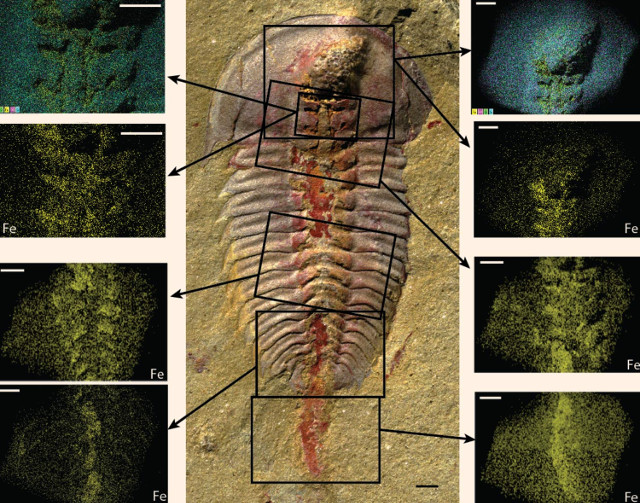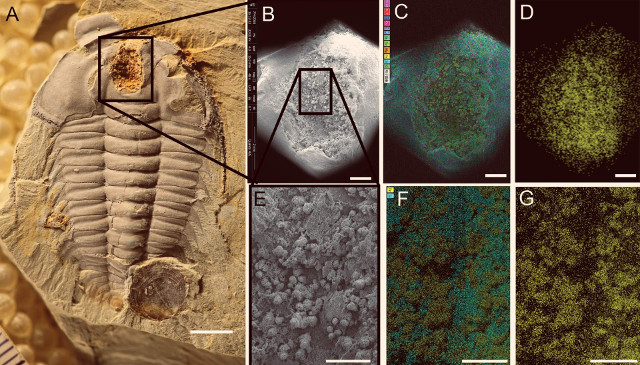
An article published in the magazine “PLOS ONE” describes a research on primitive trilobites with the discovery of the oldest digestive system consisting of digestive glands and a crop. A team of researchers led by Melanie Hopkins, an assistant curator in the Division of Paleontology at the American Museum of Natural History, examined 270 specimens of which most were discovered in Yunnan, China, where they lived more than 500 million years ago, discovering that at least the species Palaeolenus lantenoisi and Redlichia mansuyi had a stomach.
Previous research suggests that trilobites’ digestive tract was made up of a tube across the length of the animal’s body with lateral digestive glands or an expanded stomach, which is technically called a crop, leading to a simple tube without lateral glands. So far only the first type of digestive system had been found in primitive trilobites, so many paleontologists thought that the crop had evolved later.
The problem in this type of research is that soft tissues rarely fossilize so our anatomical knowledge of trilobites is limited despite the huge amount of fossils of these animals that have been found, exactly because usually only their exoskeletons fossilize. For most species of trilobites only their exoskeletons are available.
In some cases however favorable conditions allowed soft tissues not to decompose so they could also get fossilized. This happened only for a small part of the known species of trilobites, sometimes only in a specimen of a species, and traces of the digestive tract were found only in 42 species, but in the Wulongqing Formation in the Yunnan province the conservation of the specimens turned out to be truly extraordinary, of the kind that can be found in Burgess’s Shale.
Many trilobite fossils were dug out from the Wulongqing Formation between spring 2014 and autumn 2015. The researchers found two separate zones in a 40-50 meter thick mudstone: at the top specimens of Palaeolenus lantenoisi were found and in the lower one of Redlichia mansuyi. The 270 total were examined through Backscatter scanning electron microscopy (BSEM), energy dispersive X-ray spectrometry (EDS) and photographed with a photomicrographic system.
The images show specimens of Palaeolenus lantenoisi and Redlichia mansuyi with concentrations of iron and iron oxide revealed by the examinations and highlighted in the panels. Those are the areas where there were parts of the trilobites’ digestive system with crops and digestive glands.
These exceptionally preserved trilobite specimens and the highly sophisticated examinations made on them are allowing to better understand the evolution of animals that existed for a very long time and also something about their diet. They’re all details that add information about a remote era that already gave some surprises.



Permalink